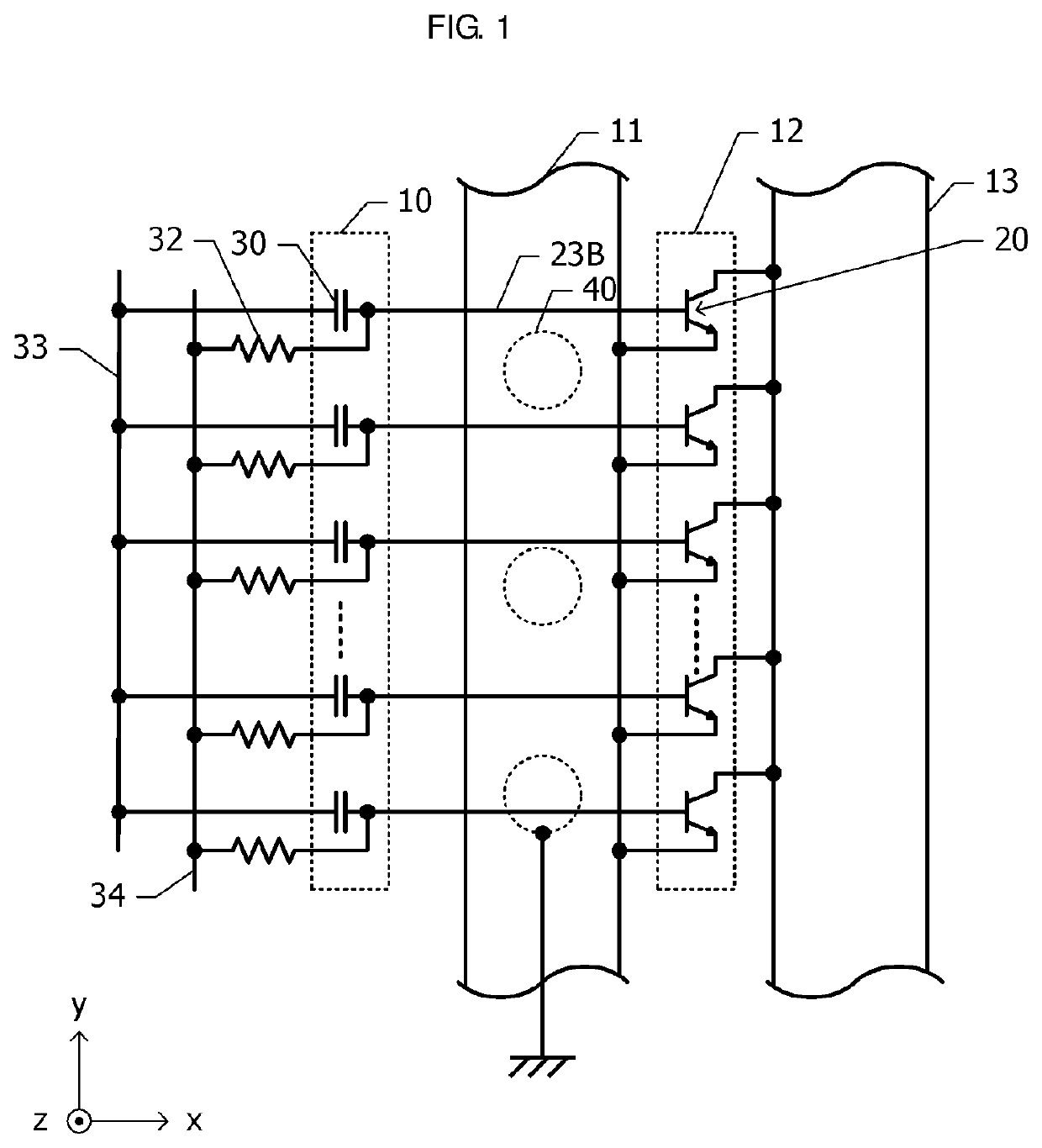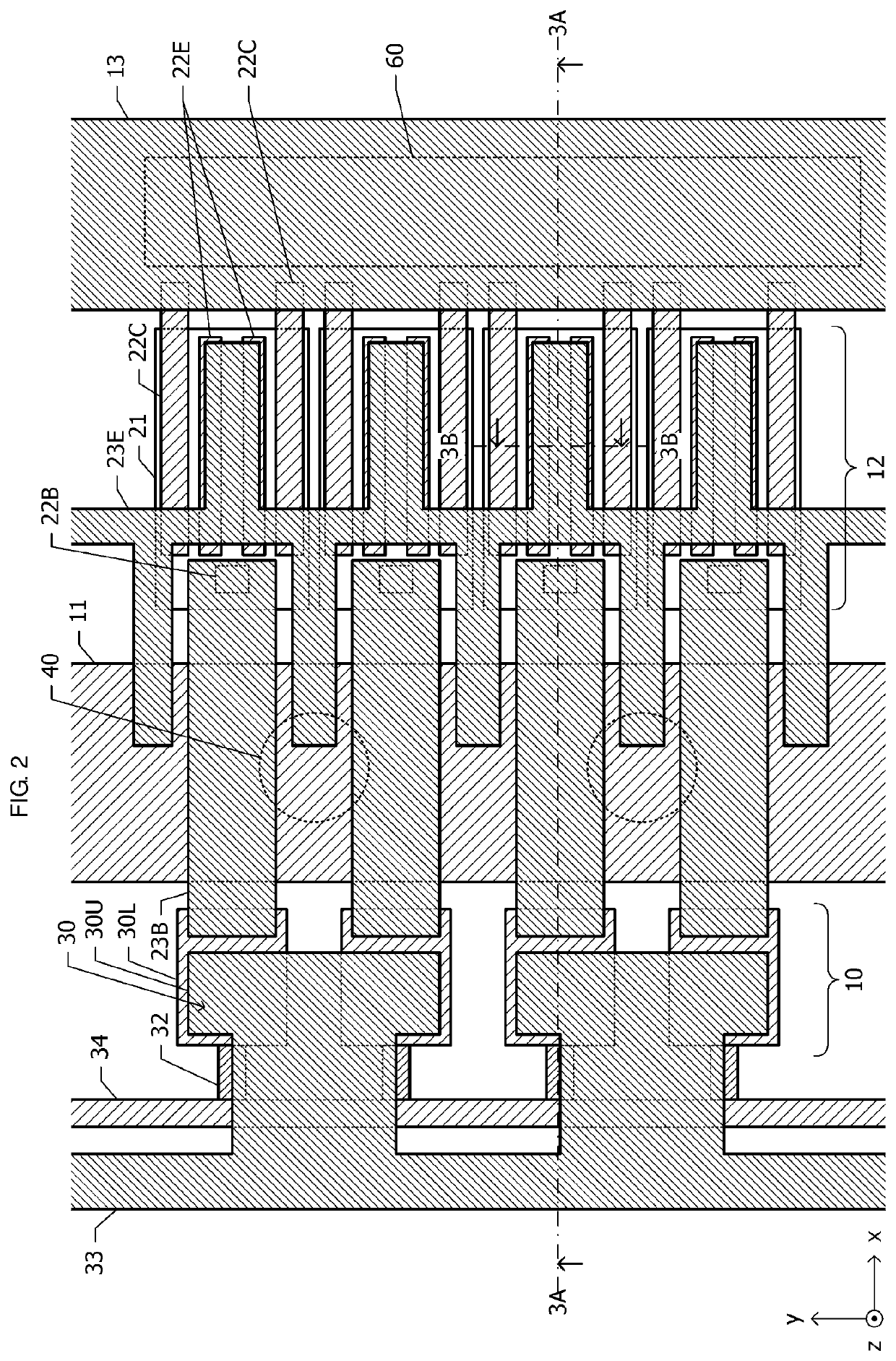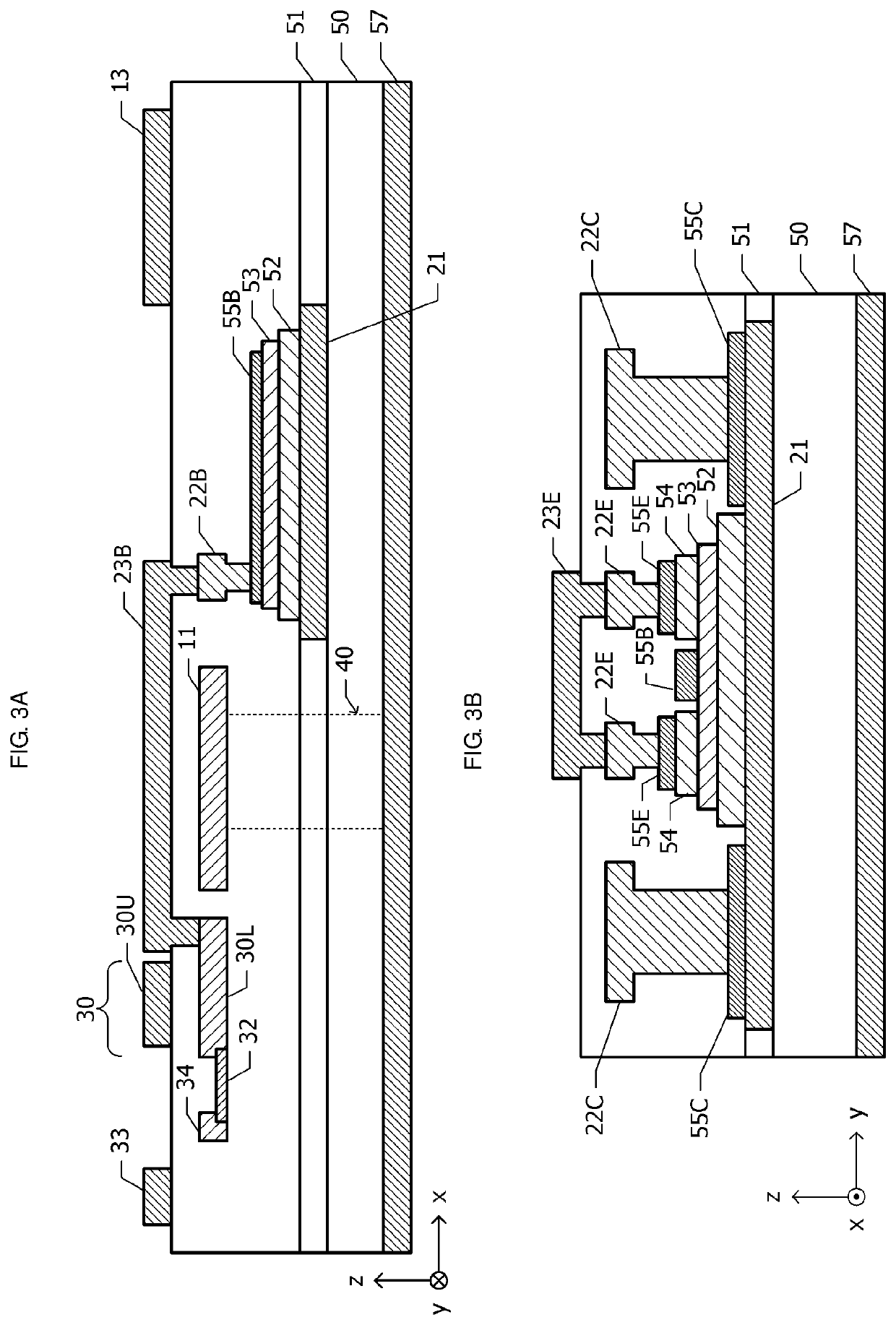Semiconductor device
a technology of semiconductor devices and semiconductors, applied in semiconductor devices, semiconductor/solid-state device details, diodes, etc., can solve the problems of difficult to improve characteristics such as gains, limited number of via-holes, and increase in loss in front-end portions, so as to reduce the resistance of emitters and suppress the effect of output power loss and shorten the distance between via-holes to unit transistors
- Summary
- Abstract
- Description
- Claims
- Application Information
AI Technical Summary
Benefits of technology
Problems solved by technology
Method used
Image
Examples
first embodiment
[0020]A semiconductor device according to a first embodiment will be described with reference to FIGS. 1 to 3B. FIG. 1 is a schematic diagram illustrating a planar arrangement of a semiconductor device according to the first embodiment. The semiconductor device according to the first embodiment includes a substrate made of a semiconductor, and a plurality of active elements, a plurality of passive elements, and a plurality of wiring lines are formed on the substrate. An xyz orthogonal coordinate system is defined in which a first surface the substrate is defined as an xy plane and a normal direction of the first surface is defined as a positive direction of a z-axis.
[0021]A plurality of unit transistors 20 each including a base layer, an emitter layer, and a collector layer are arranged on the first surface of the substrate in a y-axis direction. Input capacitive elements 30 are arranged so as to correspond to the plurality of unit transistors 20. The plurality of input capacitive e...
second embodiment
[0059]Next, a semiconductor device according to a second embodiment will be described with reference to FIGS. 4, 5A, and 5B. Hereinafter, descriptions of configurations that are common to those of the semiconductor device according to the first embodiment will be omitted.
[0060]FIG. 4 is a plan view of a semiconductor device according to the second embodiment. FIG. 5A is a sectional view taken along dash-dotted line 5A-5A in FIG. 4, and FIG. 5B is a sectional view taken along dash-dotted line 5B-5B in FIG. 4. In the first embodiment (FIG. 2), the first-layer base wiring line 22B (FIG. 3A) is arranged at an end portion of the base electrode 55B on the side close to the emitter common wiring line 11. In the second embodiment, a first-layer base wiring line 22B (FIGS. 4 and 5A) is arranged at an end portion of a base electrode 55B (FIG. 5A) on the side opposite to an emitter common wiring line 11.
[0061]A second-layer base wiring line 23B (FIG. 5A) passes above the emitter common wiring ...
PUM
| Property | Measurement | Unit |
|---|---|---|
| radio frequencies | aaaaa | aaaaa |
| transmission power | aaaaa | aaaaa |
| output power | aaaaa | aaaaa |
Abstract
Description
Claims
Application Information
 Login to View More
Login to View More - R&D
- Intellectual Property
- Life Sciences
- Materials
- Tech Scout
- Unparalleled Data Quality
- Higher Quality Content
- 60% Fewer Hallucinations
Browse by: Latest US Patents, China's latest patents, Technical Efficacy Thesaurus, Application Domain, Technology Topic, Popular Technical Reports.
© 2025 PatSnap. All rights reserved.Legal|Privacy policy|Modern Slavery Act Transparency Statement|Sitemap|About US| Contact US: help@patsnap.com



